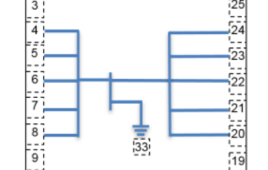
Pasternack, a leading manufacturer and supplier of RF, microwave and millimeter wave products, rolls out a brand new collection of high performance zero biased waveguide detectors that exhibit optimum performance in Ka, Q, U, V, E and W frequency bands. These waveguide detectors are widely deployed in various aerospace, defense and commercial wireless applications used in instrumentation, power detection, power monitoring, direct detection receivers, high frequency communications, radar, SATCOM, point-to-point radio, telecom, data links and R&D.
Pasternack’s latest release of waveguide detectors consists of 6 unique models covering a broad frequency range of 26.5 GHz to 110 GHz. The input ports use popular waveguide sizes ranging from WR-28 to WR-10, while the video output ports utilize SMA female connectors. The detector circuits use high performance GaAs Schottky Barrier Beam lead diodes with extremely low junction capacitance. These designs perform with minimal sensitivity variation resulting in a flat frequency response across the entire waveguide band.
The new waveguide detectors from Pasternack are all zero biased, so no external DC bias or mechanical tuning is required. The package designs utilize rugged steel construction and are thermally stable. Integrated waveguide connectors make the outline extremely compact. Performance is guaranteed over 0°C to +50°C. These detectors offer negative output voltage polarity for a variety of applications. Typical voltage sensitivity levels range from -600 mV/mW to -3000 mV/mW.




